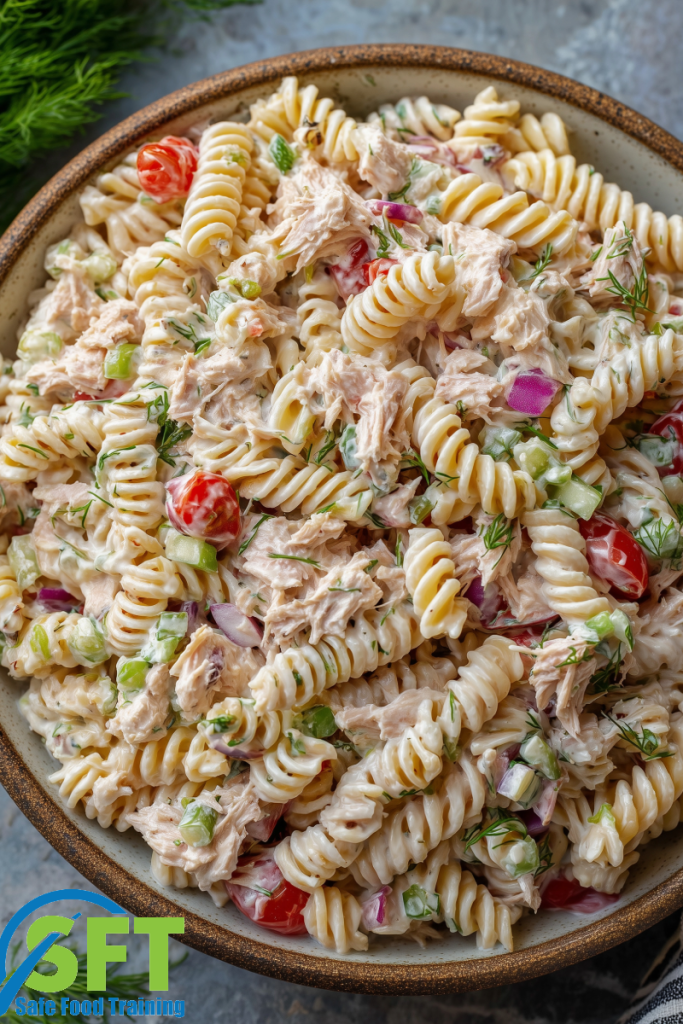As a Certified Food Protection Manager (CFPM) in Minnesota, you have likely heard a classic food safety myth: mayonnaise causes most food poisoning in potato salad, sandwiches, and other common dishes. For years, people widely believed the condiment was highly perishable and blamed it for a host of foodborne illnesses. This enduring mayonnaise food safety myth is so pervasive, it’s often the first thing people think of when a summer picnic or buffet goes wrong. However, the science behind this belief reveals a more nuanced truth.
The real culprits are almost always other ingredients that people have not prepared or handled properly to food safety standards. The myth’s enduring power is rooted in a misunderstanding of how mayonnaise is made and the critical importance of avoiding cross-contamination.
The Science of the "Mayonnaise Myth"

Commercially produced mayonnaise is a highly stable food product, primarily because of its ingredients. Manufacturers load it with acids, like vinegar and lemon juice, and preservatives that create a low pH environment. This acidic nature is hostile to the growth of most foodborne bacteria, including Salmonella.
- Low pH as a preservative: The low pH of store-bought mayonnaise acts as a natural safeguard. While you should refrigerate it for optimal taste and quality, the product’s acidity makes it far less susceptible to spoilage than many other ingredients. Some sources even suggest that adding commercially produced mayonnaise to certain dressings and sauces can extend their shelf life because of this preserving effect.
Pasteurized ingredients: The raw eggs traditionally used in mayonnaise are a common source of Salmonella contamination. However, commercial mayonnaise manufacturers use pasteurized eggs, which eliminates this risk. This key difference makes store-bought mayonnaise a much safer ingredient to work with.
The Real Culprits: Time and Temperature Control
If mayonnaise doesn’t cause food poisoning, why do popular dishes that contain it make people ill? The answer lies in the other ingredients. Dishes like potato salad, pasta salad, and tuna salad become a potentially hazardous food (PHF)—now more commonly referred to as a time/temperature control for safety (TCS) food—once you combine them. These foods are a perfect breeding ground for bacteria if they remain in the temperature danger zone (TDZ) for an extended period.
A significant portion of foodborne illnesses, including those attributed to Salmonella, results from improper temperature control. The Minnesota Food Code requires that all TCS foods be kept at or below 41°F or above 135°F to prevent bacteria from multiplying to dangerous levels.
- Susceptible ingredients: Cooked potatoes, pasta, cooked eggs, and meats are highly susceptible to bacterial growth once they are cooked and cooled. Leaving a potato or pasta salad out at room temperature for even a short time can create a significant health hazard.
- Preventing cross-contamination: Many food safety incidents at events like buffets directly result from cross-contamination. This occurs when someone uses a utensil to serve one dish and then uses it in another, or when a spreader comes into contact with raw meat proteins and then returns to the mayonnaise container. In these cases, bacteria are highly likely to contaminate the mayonnaise.
Maintaining Food Safety Standards in Minnesota



For any food professional, a strong understanding of food safety principles is essential. Relying on myths can lead to dangerous oversights in your establishment. It is crucial to always avoid cross-contamination, practice excellent personal hygiene, and ensure you handle every ingredient correctly.
Staying up-to-date with your knowledge is also a requirement of the Minnesota Food Code, which mandates that most food establishments have a full-time certified food manager on staff. These regulations protect public health and ensure professionals like you have the expertise to operate safely.
This is why proper, in-depth food safety training is so vital. It’s not just about passing an exam—it’s about understanding the “why” behind the rules. You are responsible for the health of your customers, and a sound foundation in food safety principles is the best way to uphold that responsibility. You also need to renew your certification every three years by completing continuing education.
At Safe Food Training, we offer convenient and personalized Certified Food Protection Manager courses designed specifically to help you and your team effectively meet these standards in Minnesota. We provide everything you need to become certified in one simple session, including the exam itself. Book your continuing education training or register for a full certification course on our website today.


